Sound Creation
A glimpse into the craftsmanship behind creating contemporary sound that goes beyond the limits of genres.
Bringing the distinctive sound of finger drumming to the world
One of the unique aspects of finger drumming is the strong need for a diversity of sounds in this product. It also means that these sounds must be of stellar quality, and aesthetically pleasing, whether they are acoustic drums or drum sounds processed for electronic dance music. To meet the needs of finger drummers who always seek new sounds, Yamaha’s sound design team put all their sound creation experience into the FGDP.
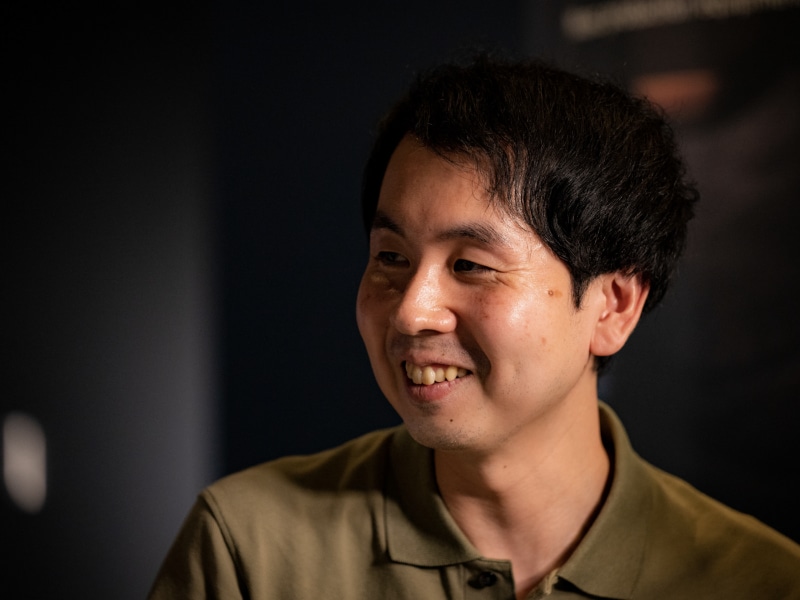
Miura:
Broadly speaking, there are two kinds of sound content that the finger drumming world looks for. The first is acoustic drum sounds, where players want lifelike impact along with the sensitivity of real drums.
The second is composite sounds with punch, which are highly sought after in electronic music like EDM. These kinds of sounds include electrically distorted sounds, sound effects and so on to cover a diverse array of demands from a wide range of users.
This is because in the world of finger drumming, there's a mix of players, including those with a background in playing acoustic drums and those who are involved in music production or who straddle both worlds. The common thread that ties them all together is their constant search for new sounds.
Yamaha has been manufacturing DTX Series electronic drums for many years. Of course, the technology and sensibilities that we’ve gained through creating sounds for the DTX Series also proved valuable to the development of the FGDP. That said, when developing the FGDP, we carefully considered what Yamaha could offer the world of finger drummers in our efforts to create sounds.
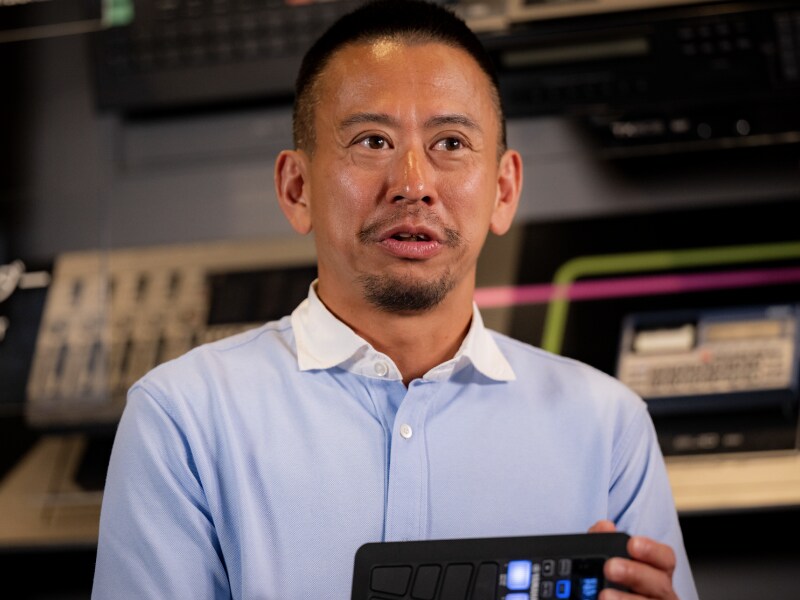
Sakamoto:
The DTX Series was a replacement for an acoustic drum kit. Because of that, players expected the product to offer the most lifelike acoustic drum sounds, or in a way, just the straight drum sound. In other words, we were pursuing the sound of being right in front of a drum kit as you played it—a realistic sound.
With finger drums, we wanted to add to that by offering a taste of original “sonic cuisine” that the players had never encountered.
Miura:
There are quite a few players in the finger drumming community who aren’t married to the concept of acoustic drums—if it sounds good, they want it. For us, as a manufacturer of dedicated finger drumming instruments, the product that we’re releasing now needs to keep bringing new sounds to the table for that audience.
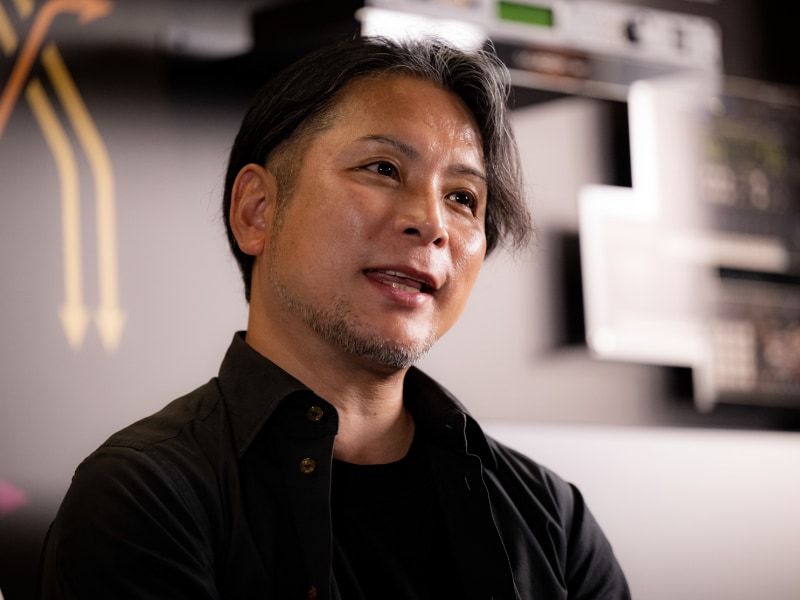
Okano:
Our hope is that by incorporating the new sounds into the product, users will have a big grin on their faces when they pick up and play this instrument for the first time... or maybe experience the surprised feeling of “whoa...” when they start drumming on it.
Since finger drums are a new world of musical instruments, it would make no sense if we just offered a selection of ordinary sounds that appeals to the masses. After all, when you’re trying to appeal to the average user, you get something that doesn’t stand out on its own. That’s why we intend to smash down those walls, and as result even professional musicians who use this product regard it as something that’s truly amazing.
Creating sounds with a high level of musical sensibility
Yamaha has a massive amount of sound assets, which is necessary in terms of material when we’re creating brand-new sounds. Aside from sounds that were sampled from a variety of instruments, we have composite sounds that were created from scratch electronically, which we processed, adding composite effects and the like to create the materials and “spices” for our recipes in a process analogous to cooking, with the necessary “pots and pans” our tools to create only the highest quality of sounds.
That said, not just anyone can create sounds, even with all these tools. Sound designers need to have a high level of musicality along with the sense and sensibilities that are aligned with the characteristics of the instruments to create just the right blend of sounds that the users of our generation want. Of course, they also need to have a deep yet broad knowledge of music. If the sound designer doesn’t have all of these qualities, the sounds they create won’t be able to satisfy the higher-level end users… and the shallowness of the sounds will be plainly evident to them. That’s why we want to talk about the other side of sound design.
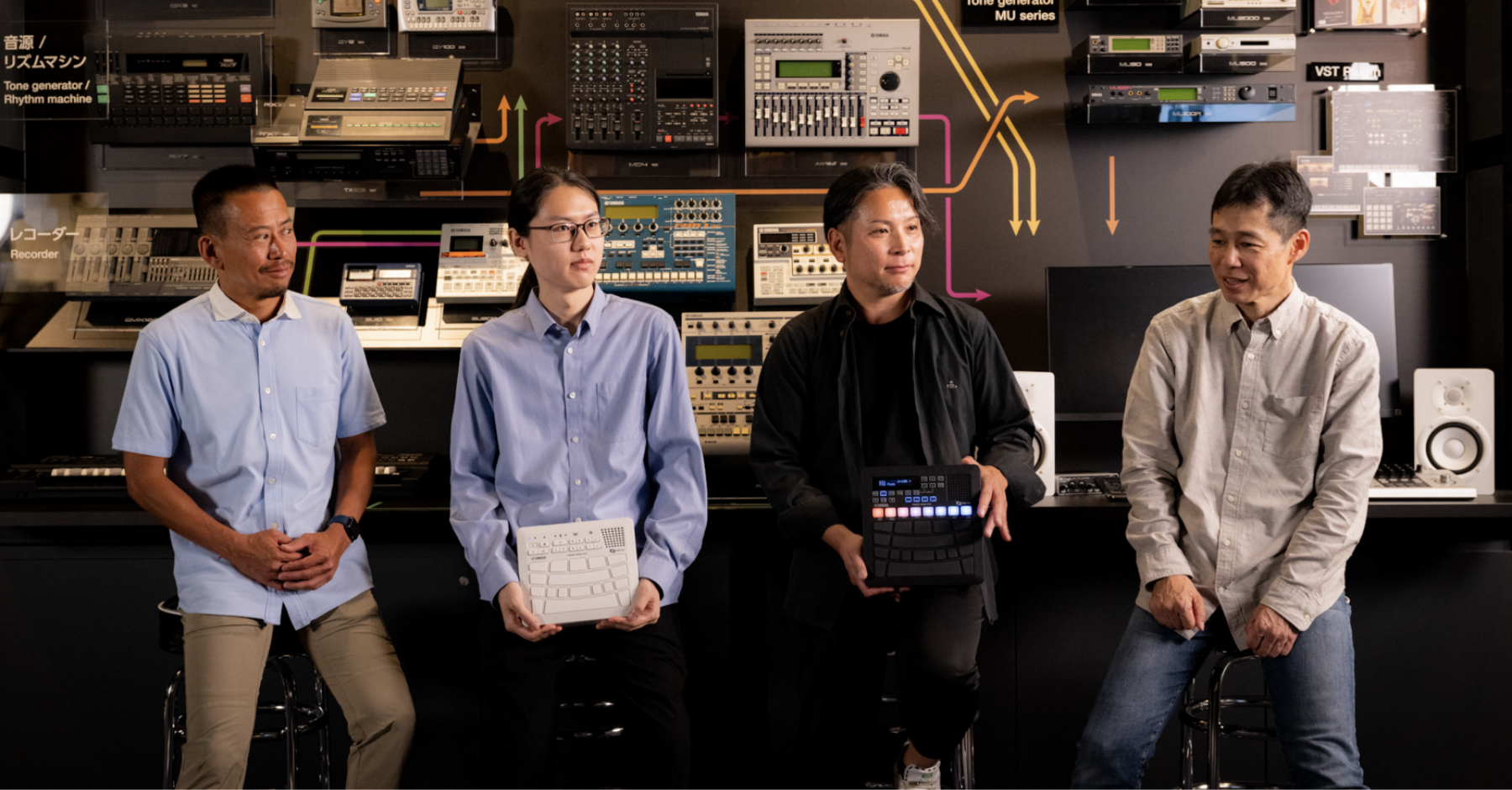
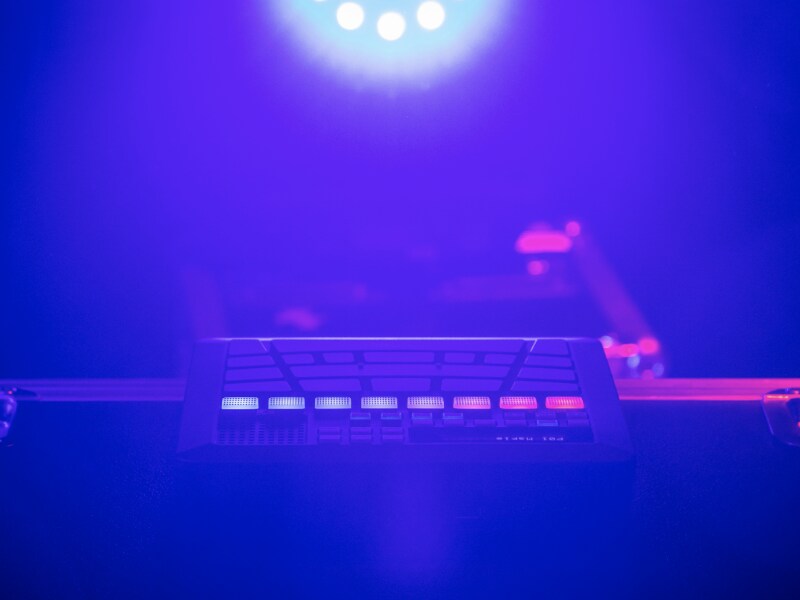
Okano:
In addition to acoustic drum sounds, the FGDP features beatbox sounds that are indispensable for playing electronic music like EDM, as well as vocal shouts, sound effects sampled from certain vintage analog synthesizers, and much more.
Also, we utilize sound assets from the past that are owned by Yamaha. We've carefully curated this extensive library of sounds, selecting only those that players will desire, and processed them to recreate them appropriately for the FGDP. It's worth mentioning that the original sound assets we used were not particularly contemporary, even though they are of high quality.
We could describe these as "the latest sounds," characterized by their impact, punch, and uniqueness. We transformed these original assets into brand-new creations by adding reverb or compression, time-stretching the samples, changing the pitch, and layering sounds for added thickness, among other techniques.
Sakamoto:
Acoustic drum sounds should have a punchiness on their own without any effects added, but they really come to life with greater power in genres like EDM when you dress them up with effects. It’s important to make this distinction according to the use case.
Okano:
Regardless of whether you add effects, the original sound material must be great from the start, or you’ve got nothing to work from. When you do a good job of “cooking up” and blending these great materials with excellent effects, the sound becomes that much more powerful and appeals to today’s tastes. That’s what we’re doing.
Sakamoto:
In doing this, when you compare electronic drums that you play with sticks like acoustic drums to the FGDP that you play with your fingers, there’s naturally a difference in feeling, in the kind of playability you expect, along with how you’d expect the instrument to sound. In this regard, it wasn’t enough to just migrate the sounds of the DTX to the FGDP.
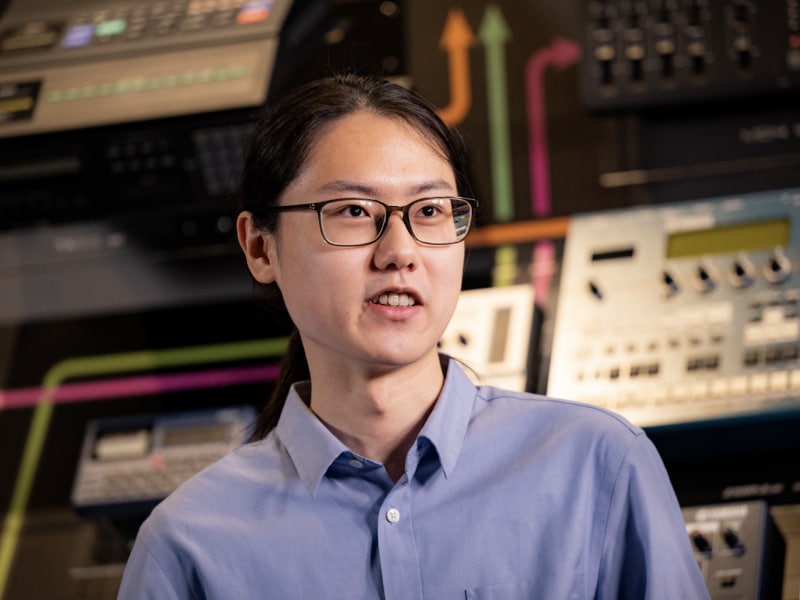
Kamada:
We consulted frequently with people in the know within our company as well as artists in the wider world to home in on the key points about what feels good when you’re playing with your fingers, along with the kind of impact you feel that makes the instrument enjoyable. We’re fine-tuning each sound as a result of this feedback, and using measures such as adding more snappiness to the sounds, enhancing the attack with effects and so on.
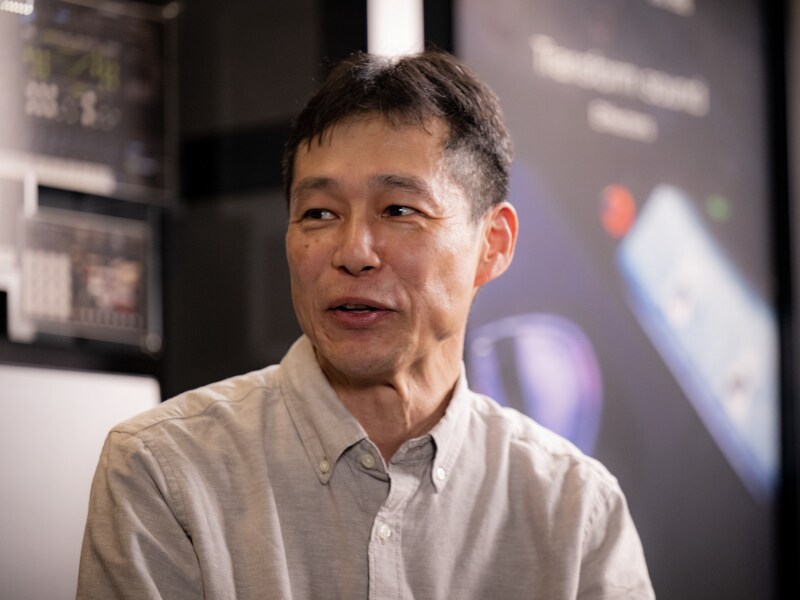
Miyake:
In processing the sounds, we implement effects selected by our sound design team.
Using effects requires a sense of artistry. For example, when creating a distorted sound, should we use a sound that’s originally distorted, or should we select a sound that isn’t distorted and use effects to add distortion to the whole instrument sound when playing? Sounds that are originally distorted are distorted evenly regardless of volume. However, when you apply a distortion effect to the entire instrument sound, the player can control the type and intensity of distortion as they play in real time. So, we need to make a decision for each sound as to how to handle this. These kinds of detailed decisions are a requirement for sound design. Sound designers who create sounds to be used on instruments prove their worth and sonic sensibilities through these decisions.
FGDP: a drum kit in a new format
When it comes to expanding the options in the world of drums, the FGDP is loaded with possibilities. The fusion of conventional acoustic drums with the emerging world of finger drums doesn’t just end with the onboard sounds and effects. By painstakingly incorporating the hints we’ve garnered from typical drumming techniques that are well-established on the acoustic drum kit into this new interface, we offer the real appeal and fun of playing the drums in an easily accessible but also musically advanced way… to those who already play acoustic drums, those who now enjoy finger drumming, and those who are ready to open the door to a new “world of drumming”.
You can really see how this high-level musical culture that our developers have nurtured and shared for so many years is reflected in the FGDP as a musical instrument for people to play.
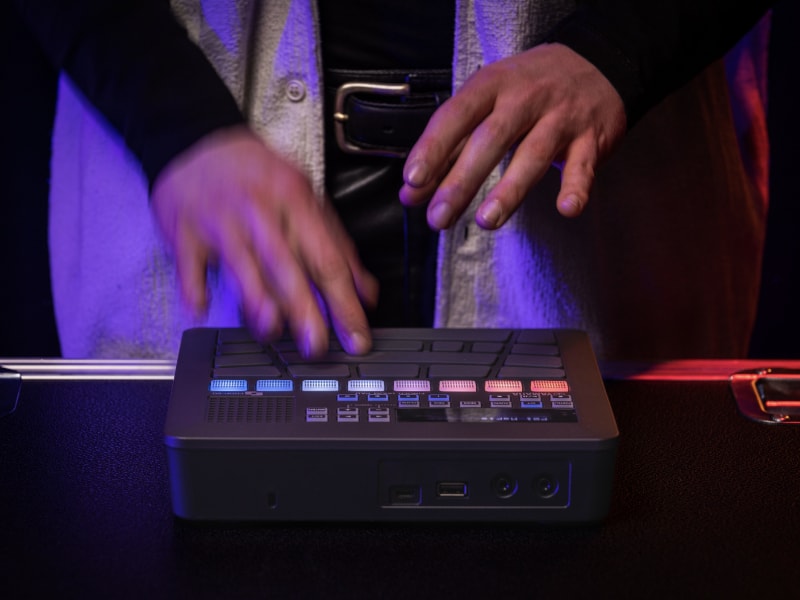
Kamada:
The FGDP series includes many presets that cover a variety of musical genres. For example, when it comes to the rock presets, it not only provides a set of sounds suitable for rock music but also arranges them in a way that makes it easy to play 8th note rock rhythms. In rock music, the kick drum is played with your thumb, the snare drum with your index finger, and the hi-hat with your middle finger—this basic arrangement is easy to play.
However, the arrangement for the ride cymbal in the rock presets may not work well for certain genres. For instance, in classic four-beat jazz, the ride cymbal and foot hi-hat are typically used more frequently than in rock, so the rock preset's cymbal arrangement may not be ideal for jazz. In the jazz presets, the ride cymbals are assigned to the positions of the crash cymbals in rock presets, making it more comfortable to play ride cymbals with the middle finger and the foot hi-hat with the index finger.
Yamaha provides different preset assignments for each genre to offer a more comfortable playing experience. Please try them out.
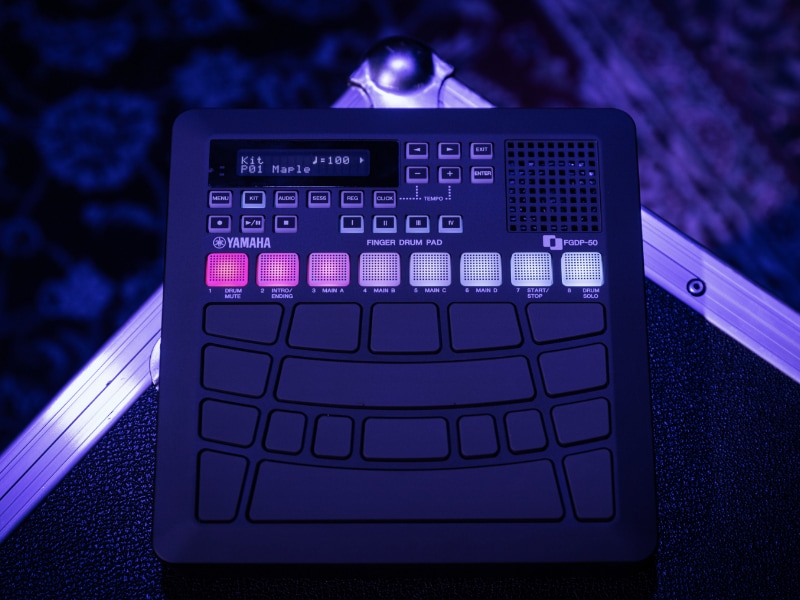
Miura:
For other genres besides jazz, like the EDM presets, we’ve assigned the sounds in a more creative way. In EDM, players don’t usually play rolls that encompass multiple toms—that’s just the nature of the musical genre. That’s why we’ve assigned the powerful sound effects to the positions of the toms.
In the world of finger drumming, players generally customize the sound assignments on a grid pad to the positions that are easiest to play. On the FGDP, the position, shape, size, and combination of sounds for each pad provide visual cues for their musical roles, which lets players enjoy an intuitive experience not available with grid pads. When we had the artists play with the FGDP, they instantly grasped the relationship between the sounds and their positions, which enhanced their enjoyment of performing on it.
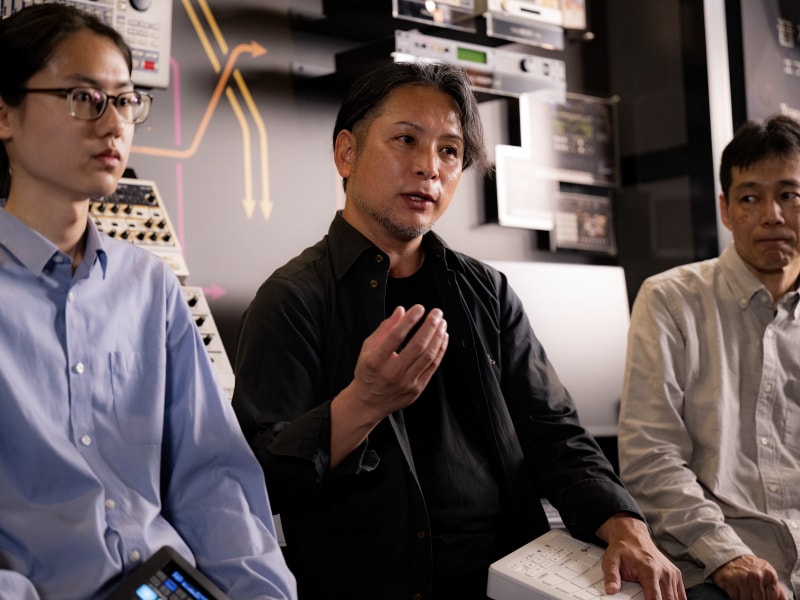
Okano:
The presets are only provided as our suggestions to the users. The users can assign the sounds to each pad as they like. If the user tries out a preset and wants to change a pad to a different sound, or move a sound to a different position, they can customize the pads to create a personalized set of finger drums.
Miura:
I should add that we created the sound assignments and links to the pads with actual drum playing in mind. For example, when you’re playing acoustic drums, you can’t physically play an open and closed hi-hat at the same time—those are two different states of the same instrument. We’ve configured the sound assignments to the pads with this in mind, so that you don’t hear musically unnatural combinations of sounds when you play.
You can make a pad play two sounds at the same time by linking the two different sounds to a single pad. This gives you access to frequently used musical techniques like adding a tambourine sound or a hand clap to a snare, Users are free to combine and configure these links.
Lastly, this instrument features aftertouch. You can use this to simulate a cymbal choke, which is the sound of stopping the cymbal as it’s ringing. With aftertouch, you push into the pad after you strike it with your finger. How hard you push into the pad with your finger can be used to change how the sound plays, how intense the effects sound, and other parameters that you can assign, for a wide range of sonic expression. We have improved the aftertouch functionality available in the FGDP to make it easy to use effectively in many different situations.
Overall, what we can say about sound design and playability is that musical instruments are designed with music in mind. Our musical instruments don’t exist as separate entities from music itself. That’s the reason why most of all, we value the enjoyment that people can have when they play music.
Engineer Interview
- Explore the untold stories behind the development of the FGDP.
Product Planning
- The story behind the birth of the FGDP, a potential game changer in the world of finger drumming.
Pad Development
- The realization of an innovative idea that achieves musicality and playability.
Compactness, Durability and Mobility
- Engineers' thoughts on how to create a drum kit that can be played anywhere and will not break, while ensuring that customers will enjoy it for a long time.









